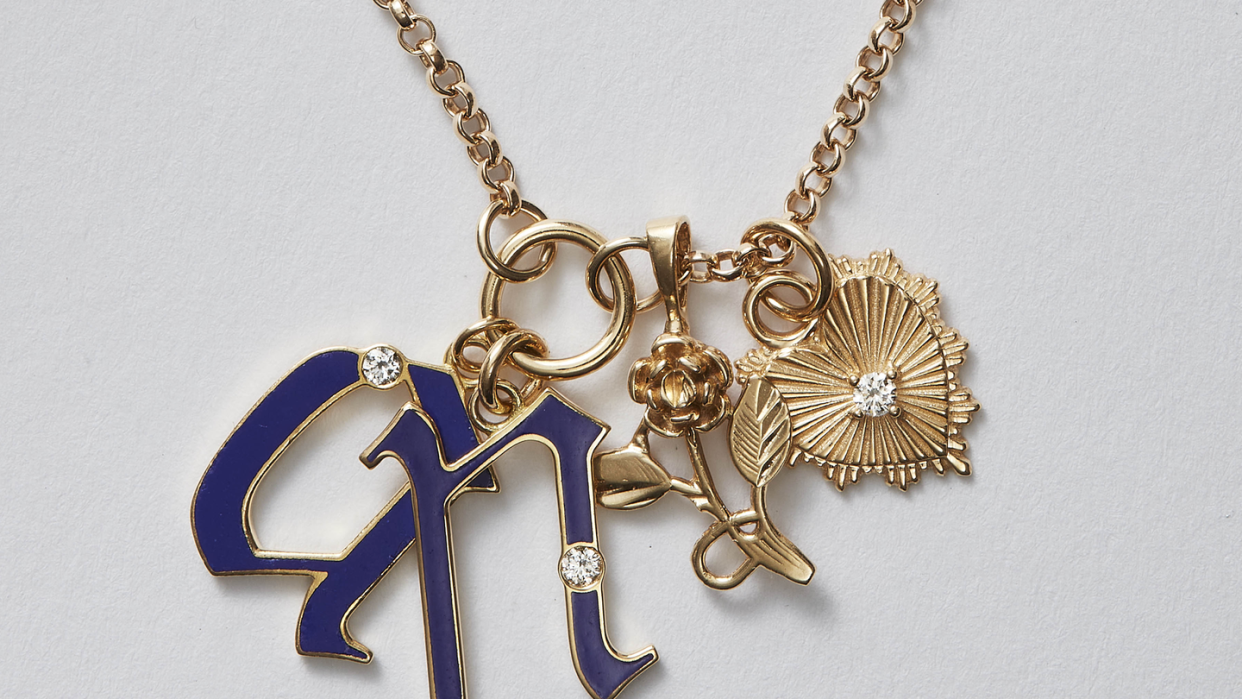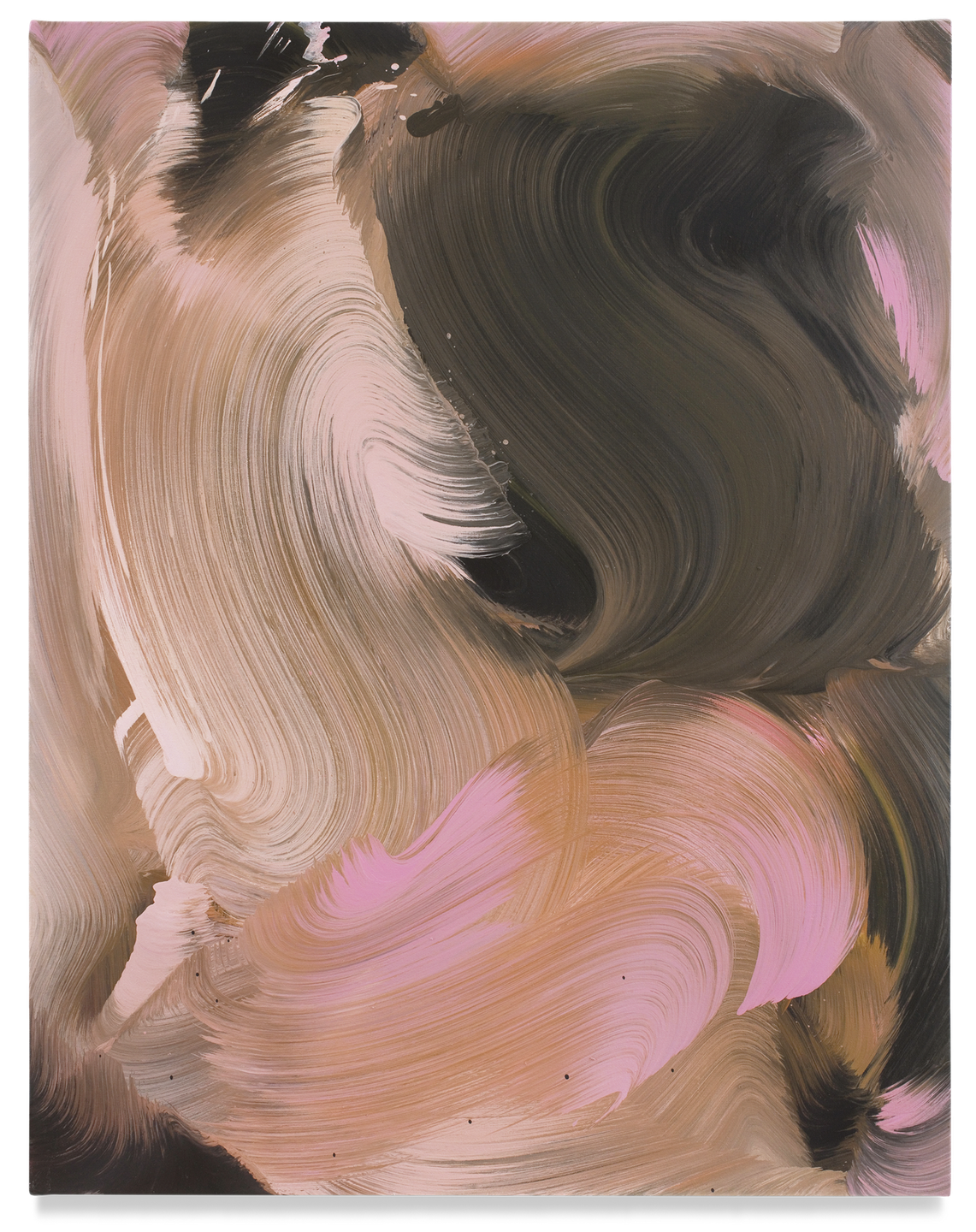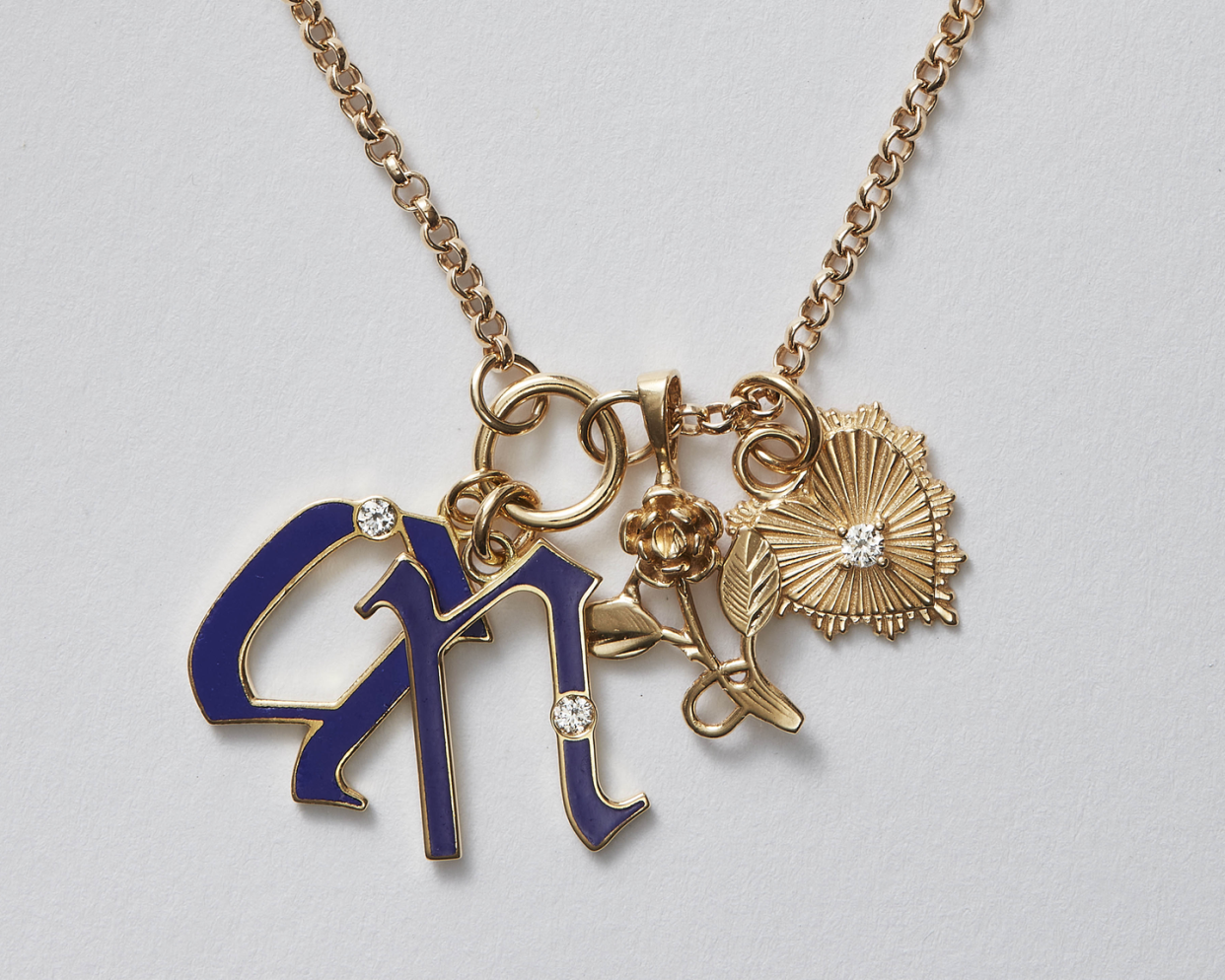The Jewelry I Wear to Help Me Grieve

"Hearst Magazines and Yahoo may earn commission or revenue on some items through these links."

Every day, I wear the same necklace. It’s a gold chain with a charm on it: the letter A in blue enamel for my first child, Adar, who is now almost 7. When I gave birth to my second child this past summer, I went to pick out a matching charm to add to the necklace, an N for Naomi.
Something about it felt off, though.
In the six years that passed between having my first and second child, I experienced four losses. Some I experienced early in pregnancy, within the first trimester; some happened later. I found out about one loss when I went in for my anatomy scan, which occurs at 20 weeks.
When I thought about wearing this necklace every day with these two charms to represent my two children who lived, it felt too tidy, almost disingenuous. The items we wear tell our stories, and I wanted mine to feel more honest.
Jewelry often marks joyful milestones like engagements, marriages, graduations, and anniversaries. But what about life’s painful but no less monumental and transformative moments? The losses and tragedies can shape our lives more distinctly than the happier occasions.
To be sure, throughout time and across cultures, jewelry has been used to remember loved ones or symbolize the inevitability of death. Mourning jewelry surged in popularity in Western culture during the Victorian era, and while it has its collectors and aficionados, it is often seen as a quirk of a bygone era, particularly the pieces that incorporated braided locks of hair from the deceased.
In the days immediately following that 20-week loss, I had to navigate New York City during the height of the pandemic, as I shuttled between doctors’ offices and hospitals and endured a succession of appointments and blood work and medical procedures. I’d never felt so grateful to be able to hide behind a mask. Despite what you may have heard, the city is full of kind, if gruff, people; in those few excruciating days after finding out the baby had died and before I was able to book my dilation and evacuation procedure (it was, for me, a small mercy that I didn’t have to deliver, as many women do), strangers would offer me their seat on the subway or congratulations. Dazed, I would muster a half smile and nod from behind my mask. I looked around at the people on the train and wondered just how many of them were also walking around like me, their nerves alternately raw and numb, carrying losses and trauma with them. Probably not an insignificant number.
This realization was both a lesson and a gift. How lucky and naive had I been to not have experienced a loss like this before this moment? And as a result, how much more empathy could I now bring to my everyday interactions?
I wanted to wear this part of my story too—something that would remind me every day that these losses were real, that they happened, and that they’ve shaped me.

The necklace I wear is from a jewelry line called FoundRae, founded by Beth Hutchens. When it launched in 2015, I was drawn to the vividly colored enamel and gold pieces studded with little diamonds and engraved with talismanic symbols and mantras; the cigar-band pinkie rings and charm necklaces started showing up on all of the discerning editors and stylish women I admired. It all seemed a little witchy and magical, and as someone who generally gravitates toward wearing neutrals, I liked the idea of adding a little color every day. What I didn’t know when I gifted myself that first A charm and necklace following Adar’s birth is that Hutchens’s line was inspired by mourning jewelry.
Fashion historian Valerie Steele, director and chief curator of the Museum at the Fashion Institute of Technology, points out that this style of mourning jewelry in Western culture predates the Victorian period, appearing by the 1750s. “That’s when you get a really protoromantic emotional movement in England, [where it] was much more about a personal self and sentimental relationships with loved ones,” Steele says. Essentially, we see the rise of mourning jewelry coincide with the modern notion of love.
Mourning jewelry around this time was typically made using jet or black enamel and engraved with the initials and birth and death dates of loved ones, and it often used pearls to represent tears. Hutchens says that she incorporated enamel into her line from “day one” because of her “love of mourning jewelry,” though she chose to use color instead of hewing to the traditional black.
In the intervening years, commercializing formal celebrations and ceremonies of love has become big business and, more recently, prime Instagram bait, while publicly mourning love lost has fallen out of favor. (Not very Instagrammable.) Steele posits that our “great aversion, especially in the U.S., to acknowledging death and loss” has something to do with it. “You can outsource mourning now,” she says, noting that the funeral business will profit off of every stage so you don’t have to deal with any of it up close. “I think [acknowledging loss] has been deeply repressed,” she says. There’s also, she surmises, the perception that only some feelings are seen as permissible. Righteous anger is our current stock-in-trade, Steele notes, while exhibiting sadness around grieving could be perceived as weakness.
Hutchens, who has a large collection of antique mourning jewelry, tells me that “so many people would say that they didn’t like [mourning] jewelry because they found it depressing because they would say it’s about death.” But she never saw it that way. “I always saw it more about life and the fact that somebody was remembering this person and honoring them and loving them.”
In fact, FoundRae was created after Hutchens experienced a devastating loss not unlike my own. Her second child, a baby she had named Nevine Rae, was stillborn. “I had never suffered such profound loss in my life before,” she says. “It made me reevaluate my life because I realized how precious it is and the fact that you can lose it in a second. And so I wanted to make sure that I was doing everything I could to make the most out of every moment, not just for my son but for myself.” She left her job at the time and went on to launch FoundRae.
At the FoundRae store in TriBeCa, I selected a small heart charm to wear alongside the A and N charms. I had the due date of the baby I lost the farthest along, 5/27/21, engraved on the back.
In my own small way, I suppose what I’m hoping to do by wearing this necklace is reject the idea that grieving is something we do in private or need to repress or that it’s a process that has an end date. These losses will always be a part of me.
There’s another piece too. Part of the reason miscarriage and stillbirth tend to not be spoken about is that there is so much shame associated with them; women who experience them perceive their bodies, and by extension, themselves, to be failures. When my milk came in following two of my losses to feed babies that didn’t make it, I was so mad at my body. How could it get everything so wrong and so right at once? This token is also, for me, about recognizing my own strength, a tiny broadcast to anyone who might ask and to myself that what happened to me happens to so many others and it is nothing to be ashamed of.
You Might Also Like
